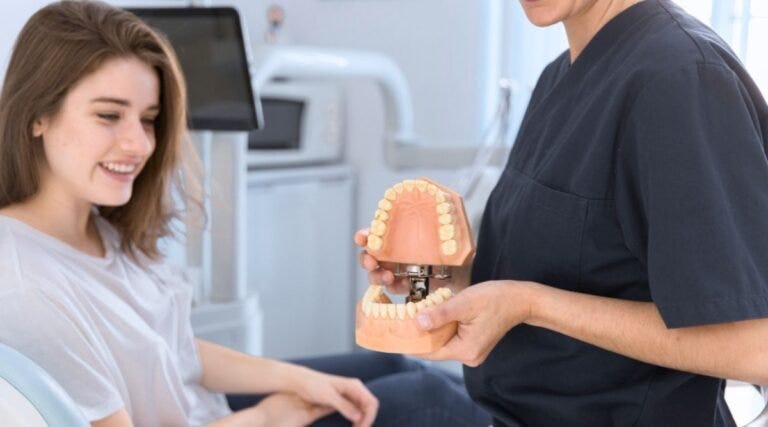
Dental implants help bring back your smile and confidence and also provide numerous benefits for your overall oral health. From preventing bone loss to improving speech and eating disabilities, dental implants offer a lasting solution that can enhance your quality of life. Dental implants are of two types, i.e., permanent and temporary. We'll discover the differences between these in detail today.
Both these treatments are provided by City Dental Hospital- Rajkot. We're a leading dental hub in Gujarat with millions of happy patients. A dental Implant is the most popular way to replace your missing tooth or teeth. In the past ten years, they have undoubtedly changed the direction of dentistry. Tooth Implants will also serve as a natural tooth rather than just looking good and feeling real.
Understanding Temporary Dental Implants
A transitional or temporary implant is a dental prosthesis that is put temporarily on a tooth. It is not meant to remain, so it is thinner. Additionally, there are distinctions in the quality of the materials with which it is made or the cost.
This type of implant is fitted. For example, when a patient has had teeth removed, but his artificial teeth are still being processed. If the patient intends to keep the empty spaces in the mouth unnoticeable or wants to have teeth to chew while the permanent implant is finished, then the temporary prosthesis is the option.
Types of Temporary Dental Implants
There are two main types of temporary dental implants:
- Endosteal
These dental implants are performed in the jawbone. Typically made of titanium and shaped like small wrenches, they are the most commonly used type of implant.
- Subperiosteal
These temporary dental implants are put under the gum but on, or above, the jawbone. This type of implant may be used in patients who do not have sufficient healthy natural jawbone and cannot, or don't want to, undergo a bone augmentation procedure to remake it.
Must Read: How often should the average person go to the dentist
Indications for Temporary Implants
- In rare cases, the patient may show some signs of bone loss and poor healing, which may require observation over the long term.
- In such instances, we may prefer to have temporary fixing placed on the dental implants rather than making final restorations.
Understanding Permanent Dental Implants
A permanent dental implant is one that the patient can't place on or take off. If it becomes necessary to remove the implant (prosthesis), the patient would have to go to the dentist. There, the professional will have to perform some complicated procedures to remove the prosthesis.
For instance, the weathering of enamel or the removal of teeth through extraction is beyond repair, at least they are today.
Types of Permanent Dental Implants
- Bone Augmentation
Study shows that using bone add-ons and growth factors to secure the bone generally achieves the best results.
- Sinus Lift
Also known as sinus augmentation or sinus elevation, this involves adding bone below the sinus. It is performed in cases where the natural bone has broken due to missing upper back teeth.
- Ridge Expansion
If your jaw isn't wide enough to hold up dental implants, bone graft material can be added to a small ridge, or space, created along the top of your jawbone.
- Immediate Load Dental Implants
Also called same-day implants or “Teeth in a Day”, immediate-load dental implants allow the installation of a temporary tooth during the same meeting as your dental implant placement. This may be a good option if you have sufficient natural bone and an implant safe enough to support immediate placement and pressure on the new temporary tooth.
- Mini Dental Implants (MDIs)
They are put through less intrusive techniques and are used primarily to balance the lower denture.
Indications for Permanent Implants
- You Have a Missing Tooth or Teeth
- Your Artificial Teeth Fit Loosely
- You Have an Acutely Cracked or Broken Tooth
READ FULL ARTICLE: Differences Between Temporary and Permanent Dental Implants





